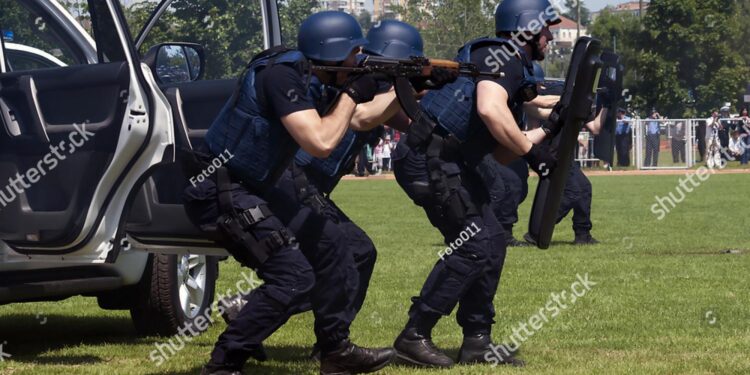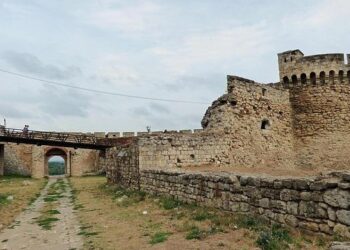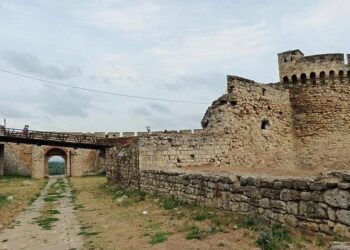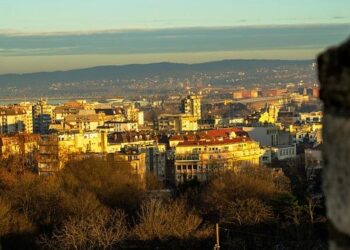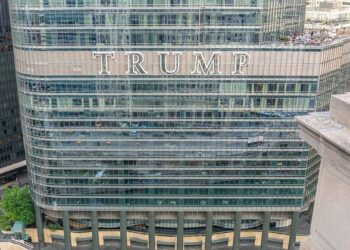Police forces in Belgrade confronted anti-government protesters in a tense and volatile escalation marking the latest chapter in Serbia’s ongoing political unrest. Demonstrators, voicing their discontent with the current administration, took to the streets in the capital city, prompting a forceful response from law enforcement. The clashes highlight increasing tensions in Serbia as citizens continue to demand political reforms and greater government accountability.
Serbian Police Use Force to Disperse Thousands of Anti-Government Protesters in Belgrade
Authorities in Belgrade resorted to forceful measures to quell a massive anti-government demonstration that drew thousands to the streets. Clashes erupted late into the evening, with police deploying tear gas and water cannons to disperse crowds that had gathered near key government buildings. Protesters expressed frustration over alleged corruption, media restrictions, and the handling of recent political crises, demanding immediate reforms and accountability from the ruling administration.
The events unfolded as organized groups carried placards with demands for transparency, press freedom, and fair elections. Despite the heavy police presence, some demonstrators attempted to push through barricades, leading to scuffles and multiple arrests. Below is a summary of the key occurrences during the unrest:
- Number of protesters: Estimated 8,000-10,000
- Amount of tear gas used: 15 canisters
- Reported injuries: 32 civilians, 8 officers
- Arrests made: 24 individuals
| Time | Incident | Police Response | |
|---|---|---|---|
| 6:00 PM | Gathering at Republic Square | Monitoring without intervention | |
| 8:30 PM | Attempts to breach barricades | Attempts to breach barricades | Use of tear gas and water cannons to disperse crowds |
| 10:00 PM | Clashes near government buildings | Arrests made, reinforced police presence | |
| 11:30 PM | Protester retreat and dispersal | Patrols to ensure area security |
Underlying Political Tensions Fueling Public Unrest in Serbia
Recent clashes in Belgrade are symptomatic of deeper, longstanding issues simmering beneath the surface of Serbia’s political landscape. At the heart of the turmoil lies widespread dissatisfaction with government transparency, allegations of corruption, and concerns about the erosion of democratic norms. Protesters accuse the ruling party of consolidating power through unfair media control and judicial influence, undermining key institutions designed to safeguard civil liberties.
The unrest is further intensified by economic struggles and a sense of political stagnation, especially among younger generations frustrated with limited opportunities and persistent inequality. Key demands voiced during demonstrations include:
- Resignation of top government officials believed to be involved in corruption scandals
- Independent media reforms to ensure unbiased news coverage
- Judicial independence to prevent political interference in court decisions
- Improved social policies targeting unemployment and poverty
| Issue | Impact |
|---|---|
| Corruption Allegations | Erodes public trust in government institutions |
| Media Control | Limits freedom of expression and access to information |
| Economic Challenges | Drives unemployment and sparks frustration among youth |
Recommendations for De-escalation and Restoring Trust Between Authorities and Citizens
Effective communication stands at the core of any effort to ease tensions between law enforcement and protesters. Authorities should prioritize transparent dialogue by organizing community forums and establishing dedicated hotlines to address citizens’ concerns in real time. Additionally, deploying non-confrontational negotiation teams trained in conflict resolution can help bridge misunderstandings before situations escalate. Alongside these measures, maintaining a visible but non-aggressive police presence during demonstrations can reassure the public while respecting their right to assemble peacefully.
Restoring public trust requires accountability and visible reforms within the police force. Implementing independent oversight committees to review use-of-force incidents and misconduct allegations can foster credibility. Training programs emphasizing human rights and cultural sensitivity should be standardized across all units. The table below outlines key recommendations and their intended impact:
| Recommendation | Expected Outcome |
|---|---|
| Community Dialogue Forums | Improved mutual understanding |
| Non-confrontational Negotiation Teams | Reduced conflict escalation |
| Independent Oversight Committees | Enhanced police accountability |
| Human Rights Training | More respectful enforcement |
To Wrap It Up
As tensions continue to simmer in Belgrade, the clashes between Serbian police and anti-government protesters underscore the deepening political divide within the country. Authorities vow to maintain order, while demonstrators show no signs of backing down, signaling that the unrest may persist in the weeks ahead. Observers both domestic and international will be closely monitoring developments as Serbia navigates this turbulent period.


